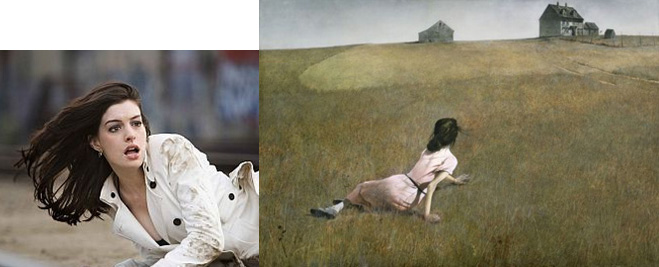
Day: February 17, 2015
vvorked again
Rhizome.org recently archived Vvork, a blog of contemporary art documentation (installation shots, mainly), based in Europe, that ran from 2006-2011. Occasionally there were witty runs of similar shots where the Vvork bloggers would implicitly make fun of how redundant certain types of conceptual art ideas are. But mostly Vvork was just relentless, averaging around 900 posts per annum. After the first year of it, real despair started to set in among a handful of artist types about where the project was going.
Michael Connor, in his generally upbeat and pro-Vvork post, links to a thread on my old blog with some of this lamentation. He brushes off the criticism, arguing for a superior overarching point of view on the part of Vvork (which somehow the artists missed?) justifying its preservation.
On the thread,* Sally McKay describes Vvork's stock in trade as "elegant sculptural installations crafted well from non-precious materials with interesting but tidy content and an unquestioning relationship to art institutions." That's a rather strong indictment, but Connor thinks it sounds "very similar to some of the stylistic descriptions offered up for postinternet art today" (a type of art he supports, whatever postinternet means).
Another dig from the thread Connor mischaracterizes, and dismisses as mere "fretting":
Some fretted that [Vvork's] emphasis on similarity undercut the artists' individuality. Artist and Rhizome friend Guthrie Lonergan took this view; he argued that "VVORK makes 'clever' very unappealing, like some disease that art catches when it gets on the Internet." The similarities and patterns made it seem as if artistic production was "algorithmic to the extreme."
No one said that Vvork "undercut artist individuality." The complaint was that by showing groups of similar artworks from around the world, each seemingly unaware of the other, Vvork was revealing a superficial cleverness without taking any critical position. Was Vvork a critique of art or a critique of documentation? Was it a critique at all or just an unusually elegant spam blog?
The confusion persists in Connor's interview with the Vvork bloggers. On the one hand they criticize artists "who seem to cultivate the image of the isolated genius, detached from any outside influence." Yet at the same time they were a "go to" place for people with special talents to be fed into the gallery system:
After the first month or so we noticed an increase in mails by artists sending us their works. After a year or so, it became more common to hear about its effects away from the keyboard, mostly from artists who had received invitations to shows after being posted.
Vvork attempted something "responsible" websites such as Contemporary Art Daily don't do, which is treat the art world as a stream of "meta" information. Occasionally this was done with discernment, for example, offering several posts in sequence of "mazes as art" or "artists releasing colored dyes into rivers as art." Mostly it was just a mishmash of stuff happening all over that chanced to catch the bloggers' eyes.
*McKay's sentence came from an earlier thread, which I was quoting. In the thread Connor links to she softens the criticism with "VVORK is popular because they show lots and lots of pictures of art from around the world without a bunch of commentary. I love that! It's kind of weird how rare it is." Despite this sounding like a movie pull quote Connor gives it stronger play in his article than the initial criticism.
